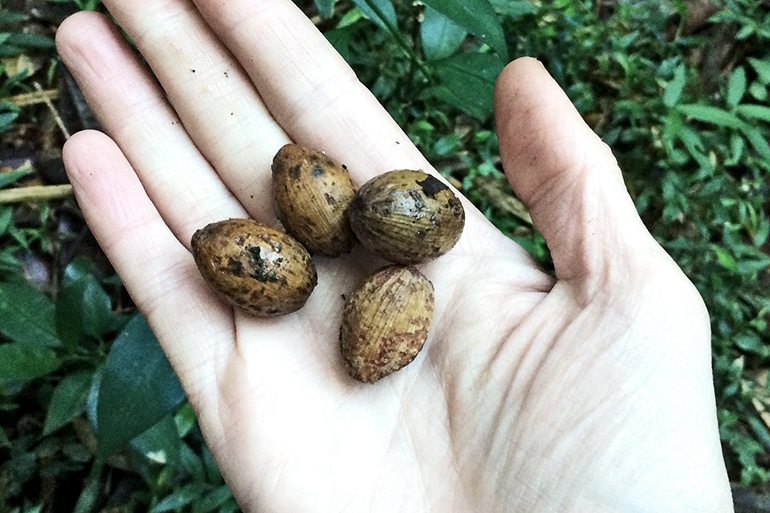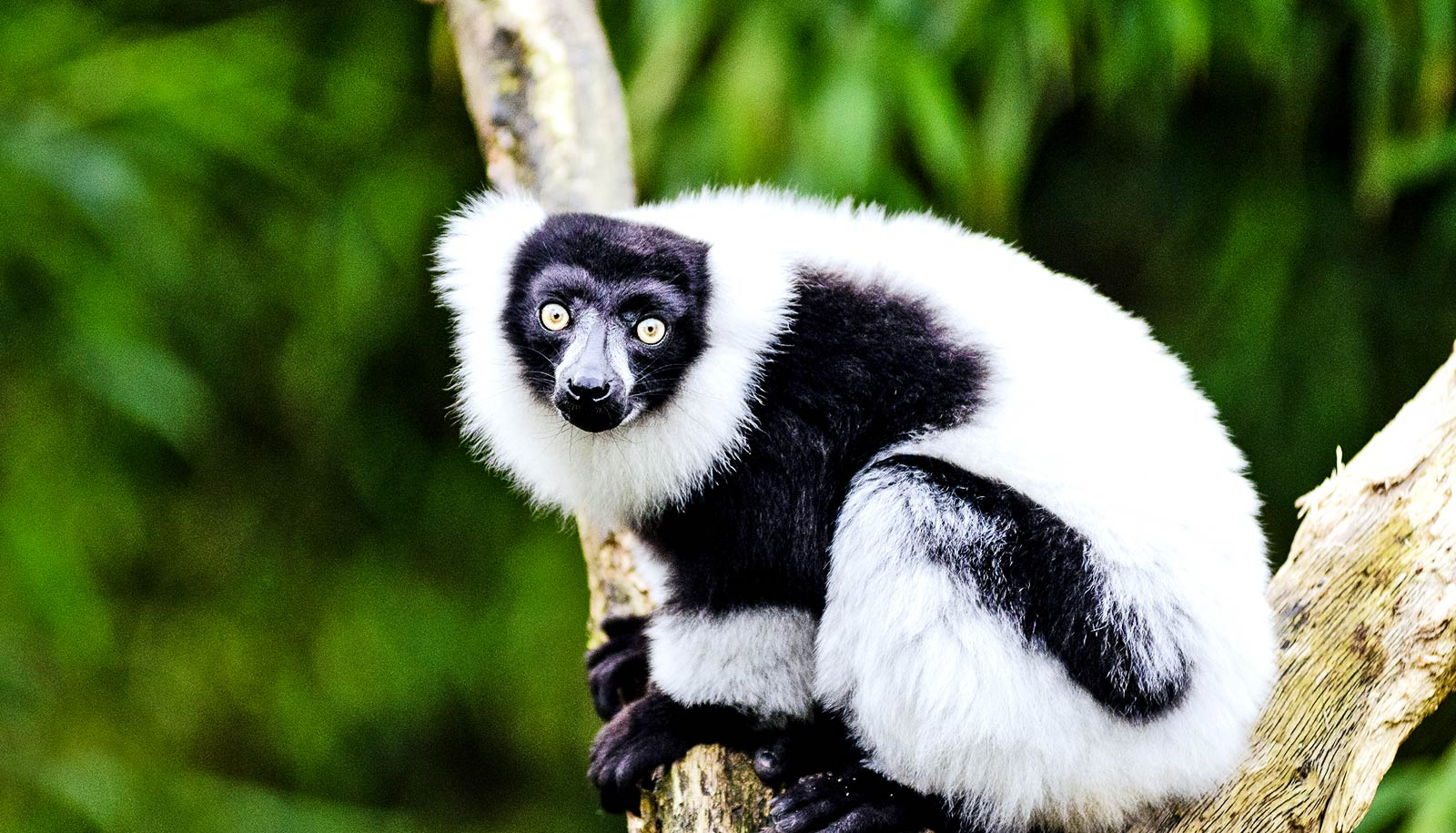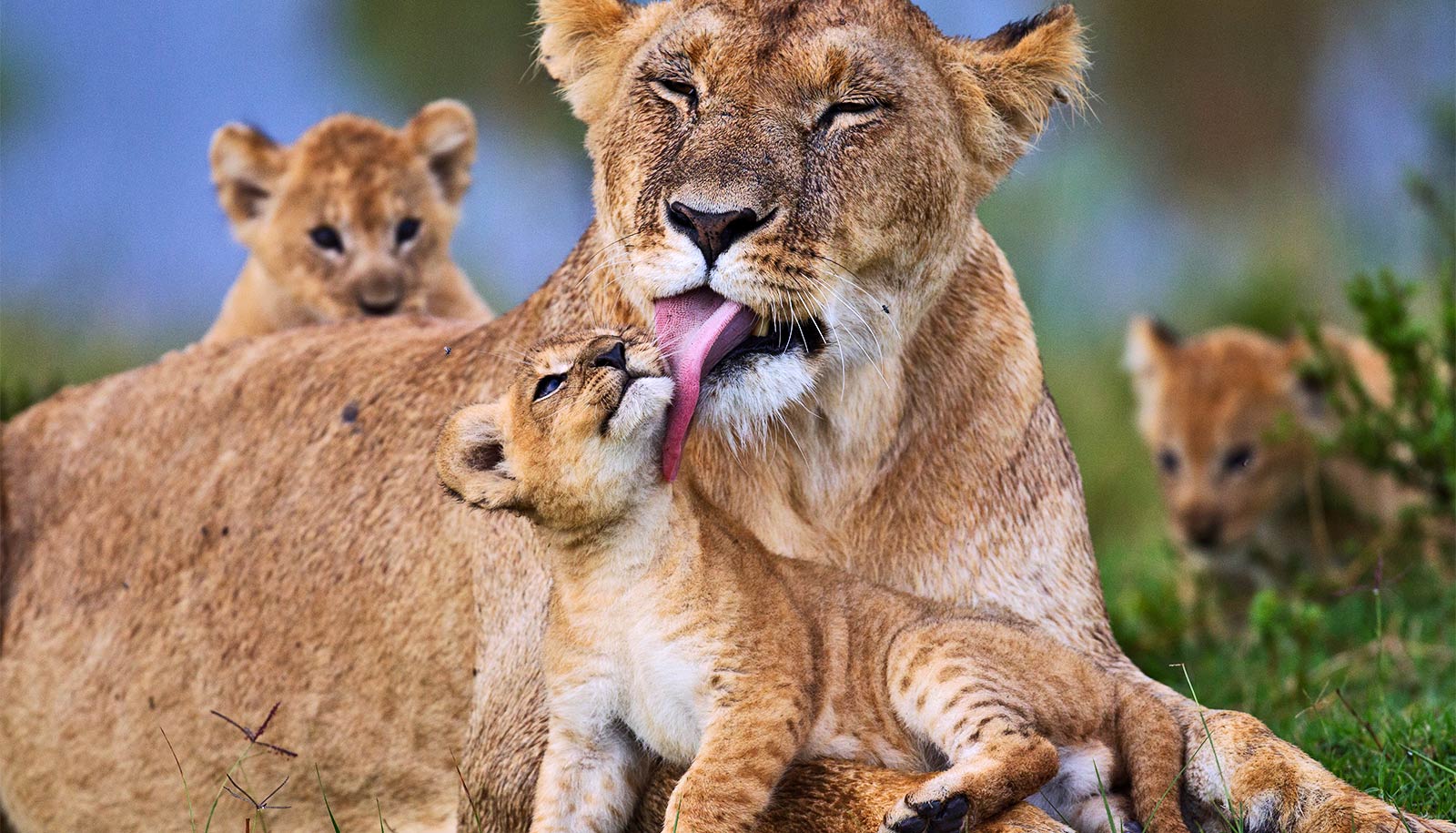Saving Madagascar’s 100-plus species of iconic lemurs, which widespread logging and hunting have endangered, may also be key to saving the island’s largest trees, according to new research.
“Forest loss is a huge problem in Madagascar right now, but our study suggests that just saving the trees is not enough,” says study coauthor Amy Dunham, associate professor of biosciences at Rice University.
“Not only are we facing the loss of these unique, charismatic animals, we’re also losing their role in the ecosystem. Without lemurs, the rainforests themselves will change because the lemurs alone disperse the seeds of many of the forests’ largest hardwoods,” Dunham says.
The study, published in the International Journal of Primatology, builds upon nearly a decade of collaborative work by Dunham and lead author Onja Razafindratsima at the island nation’s Ranomafana National Park.

Lemurs mostly eat fruit, and for many of the largest trees in Madagascar, lemurs are the only animals large enough to ingest the seeds of their fruit. By dispersing seeds throughout the forest in their scat, lemurs serve as the unwitting gardeners of these large canopy trees.
Key players
In earlier work, Razafindratsima meticulously tracked 24 groups of lemurs for three years and showed that the seeds of one species of canopy tree had a 300 percent greater chance of sprouting and becoming a sapling when lemurs dispersed them as opposed to simply falling to the ground.
“That work and other studies have suggested that lemur loss is likely to reduce regeneration of trees that rely on lemurs for seed dispersal,” Dunham says. “In the latest study, we wanted to take a broader approach to understanding how the forest might change with lemur loss.”
In 2016, Anecia Gentles joined Dunham’s research group and spent a year examining characteristics of rainforest trees and programming computational models to estimate how the forest would change if lemurs disappeared. The team showed that lemurs are not only important as gardeners of the forest, but also likely play an important role in forest carbon sequestration.
“We found that lemurs are the primary seed dispersers of the largest canopy trees,” says Gentles, an undergraduate working with the team at the time of the research. “The models suggested that the loss of lemurs and the trees they disperse could lead to increasing abundances of smaller, fast-growing tree species with lighter wood.”
Dunham says, “The biggest trees in Madagascar are dense hardwoods that grow more slowly but also store more carbon. They also tend to have the biggest seeds.”
How would Madagascar change?
The team used trait measurements from more than 7,000 trees of nearly 300 species. Study coauthors Jean-Claude Razafimahaimodison and Claude Ralazampirenena, Malagasy scientists from the Centre ValBio, a research station at Ranomafana National Park, collected the data as part of the years-long effort of the Tropical Ecology Assessment and Monitoring (TEAM) Network.
“We used TEAM Network data, new data, and previously published data on animal seed dispersal in the park to make models that show what would happen if lemur-dispersed trees started disappearing and were replaced by trees whose seeds are dispersed by birds, the wind, or other methods less affected by human activities,” Dunham says.
Lemurs share gut bacteria when they cuddle
The models explored how the makeup of the forests might change in different scenarios ranging from one in which lemur-dispersed trees declined by 25 percent to an extreme case where all lemur-dispersed trees were wiped out.
“There still would be a forest, but the makeup of trees would be quite different, and the forest’s ability to sequester carbon would be greatly diminished,” Dunham says. “For example, in the case where all lemur-dispersed trees disappear from just one hectare of forest, a patch of 2 1/2 acres, the average loss of above-ground biomass is 24 metric tons—or almost 53,000 pounds.”
She says the findings have implications for initiatives like the United Nations’ REDD program, which incentivizes carbon sequestration through forest conservation.
“The goal of such programs is to preserve forests, because there’s a lot of carbon in the biomass of trees,” Dunham says. “At the same time, tropical forest ecosystems globally are threatened by the loss of large fruit-eating animals, and there’s growing evidence that we need to think more holistically about conserving functioning ecosystems in order to save forests.
Extinct lemurs left behind plant ‘orphans’
“For Malagasy forests, our study connects the dots and shows that integrated forest protection and lemur conservation are required in order to maximize carbon-storage potential,” she says.
Conservation International, the Missouri Botanical Garden, the Smithsonian Institution, the Wildlife Conservation Society, the Gordon and Betty Moore Foundation, and Centre ValBio supported the TEAM data collection.
Source: Rice University



